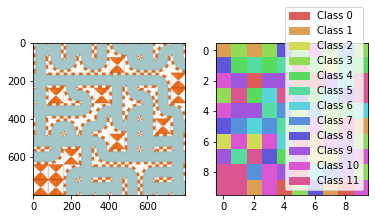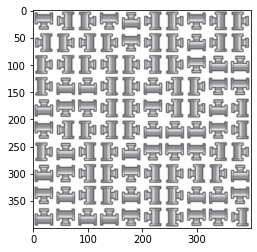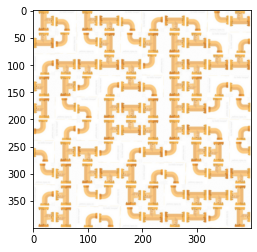
Wave function collapse part 2
This post is the follow-up of the previous one explaining the algorithms. In this one, we will see how we can get more interesting generations.
Note : Have a look at the original github repository implementing this algorithm.
Handling symetry for efficient generation
So far, we had to define manually the adjacency matrix. This is not something that ones wants when the number of blocks increase. It is also very tedious if not impossible to do it manually without a general rule.
This can be easily applied to domino-like tiles. They need a matching number in order to be connected together.
Symmetry rules are defined on top of connected-or-not rules between tiles.
To simplify our example, we will keep only 1-0 connections
up right down left
T = [0 1. 1. 1.]
We can deduce connectivity of rotated version of T
up right down left
- T = [0 1. 1. 1. ]
- |- = [1 1. 1. 0. ] rotated right once 90°
- | = [1 1. 0. 1. ] rotated right twice 90°
- -| = [1 0. 1. 1. ] rotated right thrice 90°
To find connections between symmetric transformation of peices we can use the following rule building :
- Right connection T and |- == M[0, right] * M[1, left]
We need to build two functions :
- One to create the different rotations of a single tile
- Building the adjacency matrix based on the connectivity vectors of all tiles
All rotations finctions
T_CONNECTIVITY = [0, 1, 1, 1]
ROT_90_MAT = np.array([[0, 1, 0, 0], [0, 0, 1, 0], [0, 0, 0, 1], [1, 0, 0, 0]])
def build_all_rotations(ref_pieces):
assert type(ref_pieces) == list
result_array = []
for ref_piece in ref_pieces:
result_array.append(ref_piece)
for _ in range(3):
result = ROT_90_MAT.dot(result_array[-1])
result_array.append(result)
return result_array
build_all_rotations([np.array(T_CONNECTIVITY)])
#>>[array([0, 1, 1, 1]),
# array([1, 1, 1, 0]),
# array([1, 1, 0, 1]),
# array([1, 0, 1, 1])]
In this block, we define the connectivity vector of a T shaped tile :
- Up : NO
- Right : YES
- Bottom : YES
- Left : YES
In fact, to tile can connect if they have the same symbol, so a NO-NO connection is possible.
Now the rotation, with a 90-degree rotation, we can update the original vector to get the connection info of the rotated tile. 90 deg rotated T :
- Up : YES
- Right : YES
- Bottom : YES
- Left : NO
That’s it, we have created new tiles by symmetry.
Building the adjacency matrix
Now we create the part defined as adj(rigth, 0, 1) == M[0, right] * M[1, left]
direction_dictionnary = {
3: (-1, 0), 0: (-1, 0), 1: (0, 1), 3: (0, -1)
}
def build_adj_from_number_vec(vector_array):
N = len(vector_array)
adj = {direction: np.zeros((N, N)) for direction in direction_dictionnary.values()}
for direction_index, direction in direction_dictionnary.items():
for i in range(N):
for j in range(N):
adj[direction][i, j] = vector_array[i, direction_index] == vector_array[j, (direction_index + 2) % 4]
return adj
adj = build_adj_from_number_vec(np.array(build_all_rotations(np.array(T_CONNECTIVITY))))
The formula is just retranscribed with adj[direction][i, j] = vector_array[i, direction_index] == vector_array[j, (direction_index + 2) % 4]
We just need to iterate over all triples (direction, i, j). It’s important to do them all because even i-i interaction are meaningful
Some generations
 Generated with T shaped pipes only
Generated with T shaped pipes only
 Generated with T and L shaped pipes
Generated with T and L shaped pipes
 Generated with all possible shapes
Generated with all possible shapes